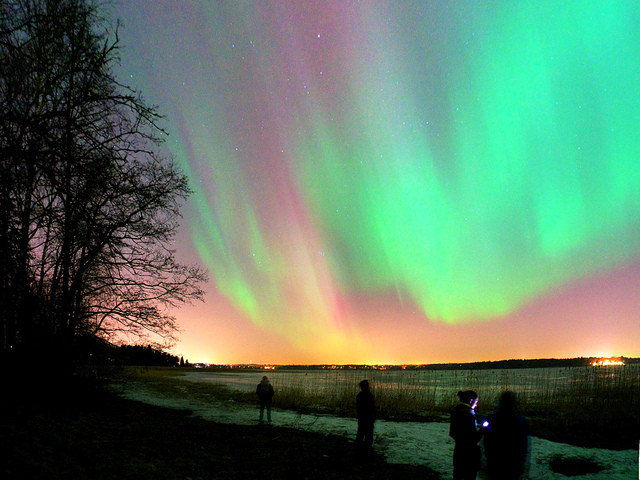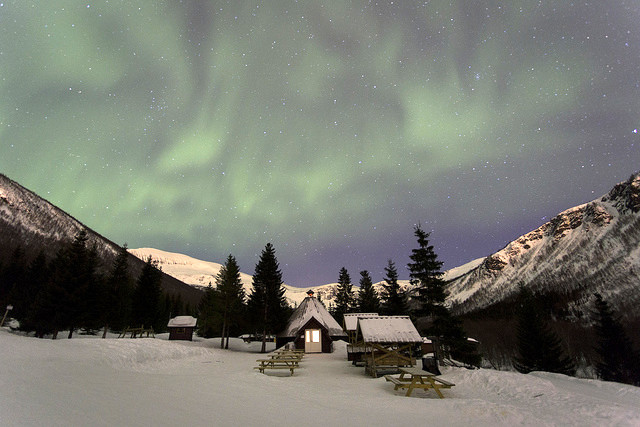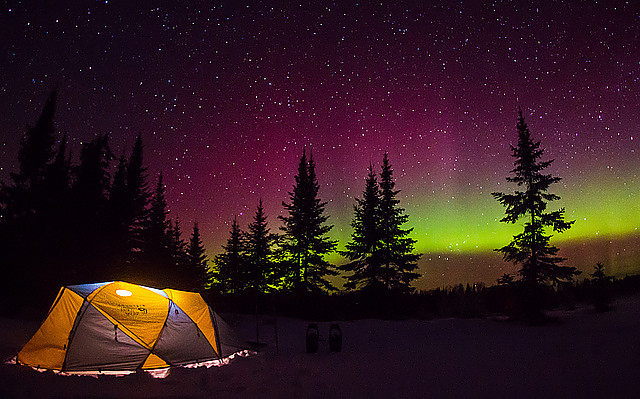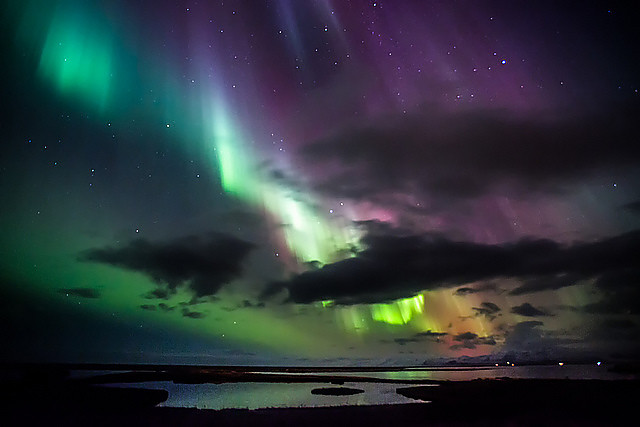When is the best time to go and see the Northern Lights?
If you're planning to jet off to Norway, Alaska, or Finland and you're wondering when the best time to go and see the Northern Lights is, you have come to the right place! Make sure you know when the best time of year is to see the best show possible. Although the phenomenon can be seen even as far south as 35° north latitude (Cyprus, Morocco, Greece), the best places to source out the vibrant colours of Aurora Borealis are definitely further north. With this guide, you will be able to plan the perfect getaway to see the most beautiful light show nature has to offer. Keep reading to discover the perfect place, time of year and weather forecast that will give you the highest odds of seeing your magical northern dreams come true.

Want to go to the places with the highest probability of seeing the Northern Lights? Look no further! The Auroral Oval is a circular band that is centred over the north of the earth, covering the northern areas of Canada, the majority of Alaska, Southern Greenland, Northern Norway and the whole of Sweden, Finland and Iceland. Here are the top locations of towns and cities in each of the countries listed:
1. When to see the Northern Lights in Alaska
Fairbanks, known as the "Golden Heart" of Alaska, is recognised as a very popular and reliable place to see the Northen Lights in the dead of winter - around January/February time.
2. When to see the Northern Lights in Canada
You can often see the dancing lights of Aurora Borealis in Yukon, Canada, before the first snowfall of the year in January. You could be sitting in a 47 degrees Celcius pool at the Takhini Hot Pools while seeing the freezing Northern Lights dance above you.
3. When to see the Northern Lights in Iceland
Last year in Reykjavik, the Northern Lights were seen as early as August. Check out this informative article about Iceland and discover how to catch the Northern Lights at just the right time - tours start at the beginning of September.
4. When to see the Northern Lights in Norway
Alta is "the city of the Northern Lights", with shows up to 200 nights per year. It's reputation proceeds it and you can go anytime between November and January. Sanne’s experience "Northern Lights and the Northern Lights Cathedral" in Alta was one of the best experiences in her life.
5. When to see the Northern Lights in Finland
Rent a glass igloo in Kakslauttanen and watch the dazzling show above you as you celebrate with a glass of wine, or a warm hot chocolate in the months of December and January. If you're lucky, you may see the reflections of these lights in a nearby frozen lake and become surrounded by the phenomenon.
6. When to see the Northern Lights in Sweden
At Camp Alta in Kiruna, you can spend time with your loved ones and create unforgettable memories like they did in this amazing story from Camp Alta - "A place where dreams do come true". The best time to go would be between December and March.
Wherever you go, one thing's for sure, once you get on the ground to watch the lights, make sure you set yourself up facing north. You will see the lights close up, but they are actually at about 80km (50 miles) above the surface of the earth.

What time of year: Darkness
First things first: it’s difficult to catch nature’s light show on the first try. Even if you’re in the exact right place under the Auroral Oval, you still may not see them as they are still somewhat unpredictable. Pablo, from Erasmusu, knows this all too well as he wrote about his first attempt at seeing the Northern Lights. Keep trying. The best time of year to go is between late September and late March - the dark months. Outside of these months, most of these high-altitude countries experience daylight all 24hrs long, with no darkness and therefore no lights. During the dark months, there are two peak times to visit when the lights are at their best. This would be during the March and September equinox. Although the specific dates change each year, they are usually centred around the 20th March and 23rd September. If you do catch them at this time, the result is absolutely incredible - read all about Pachara’s experience about what the Northern Lights taught her here.

What time of day: Overnight
Catching the spectacle of Aurora Borealis requires you to be there ready and waiting between 6 pm and 4 am - the most intense period of the day. Hopefully, there will be a lot of strong activity for you to feast your eyes on, starting at 6 pm, peaking at 10 pm and then tailing off around 1 am so that you can finally go to bed and dream some more about the beautiful lights you have just witnessed.

Weather forecast: Clear Skies
Once you get there, if you’re in desperate need for some tips on how to take the perfect photo of the Northern Lights to show everyone at home, here’s a blog post on how to do exactly that. What you’ll need is to look at the weather forecast before you head out. Towards the end of the time frame (February/March), the weather is much better with clear skies revealing more than 80% of the fantastic lights. Make sure you have settled yourself in an area with the least amount of surrounding light pollution possible as the Northern Lights can be quite faint sometimes, and they need a totally dark atmosphere to shine. Not only that, but you need to look at the average weather forecast for the months you are interested in, not for the cold, but for rain instead. In fact, Norway and Sweden have a 70% chance of rain every single day during the month of December, so while you may not mind the cold itself, you won’t want to get soaked as well. That being said, the weather up north is notoriously unpredictable, so don’t throw your plans out the window if there is a lot of cloud cover, just wait for a while and you may see it start to clear as quickly as it arrived.

There you have it, your complete guide to having the experience of a lifetime underneath Mother Nature’s most fantastic spectacle. If you do manage to see the Northern Lights, make sure you join the conversation at Erasmusu.com. You can follow and like us on Facebook, Twitter and Instagram to keep up with any new and important information.
PS: if you are looking for some accommodation on your next adventure, whether it be in frosty Sweden or sunny Spain, we have the answer! From a room in a shared flat, University Halls, a studio apartment, find your new home at Erasmusu.com.
Photo gallery
Content available in other languages
Want to have your own Erasmus blog?
If you are experiencing living abroad, you're an avid traveller or want to promote the city where you live... create your own blog and share your adventures!
I want to create my Erasmus blog! →








Comments (0 comments)